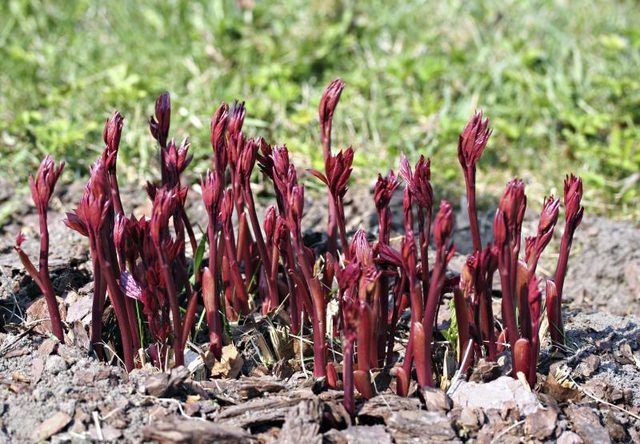Bulbs
Flower Basics
Flower Beds & Specialty Gardens
Flower Garden
Garden Furniture
Garden Gnomes
Garden Seeds
Garden Sheds
Garden Statues
Garden Tools & Supplies
Gardening Basics
Green & Organic
Groundcovers & Vines
Growing Annuals
Growing Basil
Growing Beans
Growing Berries
Growing Blueberries
Growing Cactus
Growing Corn
Growing Cotton
Growing Edibles
Growing Flowers
Growing Garlic
Growing Grapes
Growing Grass
Growing Herbs
Growing Jasmine
Growing Mint
Growing Mushrooms
Orchids
Growing Peanuts
Growing Perennials
Growing Plants
Growing Rosemary
Growing Roses
Growing Strawberries
Growing Sunflowers
Growing Thyme
Growing Tomatoes
Growing Tulips
Growing Vegetables
Herb Basics
Herb Garden
Indoor Growing
Landscaping Basics
Landscaping Patios
Landscaping Plants
Landscaping Shrubs
Landscaping Trees
Landscaping Walks & Pathways
Lawn Basics
Lawn Maintenance
Lawn Mowers
Lawn Ornaments
Lawn Planting
Lawn Tools
Outdoor Growing
Overall Landscape Planning
Pests, Weeds & Problems
Plant Basics
Rock Garden
Rose Garden
Shrubs
Soil
Specialty Gardens
Trees
Vegetable Garden
Yard Maintenance
Can I Propagate a Peony From a Cutting?
Can I Propagate a Peony From a Cutting?. Prized for their large, colorful flowers, peonies (Paeonia spp.) bloom in spring. Of the two basic peony types, the one you're most likely to grow is **herbaceous garden peony** (Paeonia lactiflora), which is hardy in U.S. Department of Agriculture plant hardiness zones 2 through 8. The taller-growing **tree...

Prized for their large, colorful flowers, peonies (Paeonia spp.) bloom in spring. Of the two basic peony types, the one you're most likely to grow is herbaceous garden peony (Paeonia lactiflora), which is hardy in U.S. Department of Agriculture plant hardiness zones 2 through 8. The taller-growing tree peony (Paeonia suffruticosa) is a woody shrub rather than a tree, and grows in USDA zones 2 through 9, depending on the variety. Both types go dormant in the winter. Only tree peonies root from cuttings. Propagate herbaceous peonies by division or from seed.
Making Preparations for Cuttings
Before taking cuttings, wipe pruner blades with a cloth soaked with rubbing alcohol to prevent introducing disease. Then fill a clean 2-inch pot with holes in the bottom with a moistened mixture of half perlite, half peat. Have ready a new, clear, 1-gallon plastic bag.
Taking Cuttings
Tree peony roots best from half-ripe cuttings taken in late summer. In a half-ripe cutting, the tip is still actively growing but the middle of the stem is beginning to harden. Sometimes the faster growing, softer new spring stems also root. Take a 4- to 6-inch long cutting that contains three to four leaves, and pull off the lower leaf or two.
Rooting Cuttings
Dip the stem end into rooting hormone so the cut ends and the places where leaves were removed are coated, shaking off any extra. With a pencil or chopstick, make a hole in the center of the rooting medium, insert the cutting past the last leaf removal wound, and firm the mix around it. Place the pot in the plastic bag and put it in bright, indirect light, closing the bag. Mist the plant inside the bag several times a day. Keep the rooting medium moist but not soggy.
Transplanting Cuttings
Check for rooting after several weeks by tugging gently on the cutting to see if it resists movement. When new leaves start to form, it's a good sign that the cutting is rooting. Remove the plastic bag when rooting begins, keeping the rooting medium moist. When enough roots form to hold the rooting medium together, transplant the cutting to a 3-inch clean pot with holes, using a soiless potting mix that contains perlite or vermiculite, watering it immediately.
Making Divisions, Step 1
To propagate herbaceous peonies, choose a plant that's been growing undisturbed for 3 to 10 years. In the fall, cut back any existing foliage and carefully dig around and under the plant's roots, lifting them from the soil with as little damage as possible. You'll find thick, fleshy tubers extending down from the crown of the plant, which is where the stems join the root system. Shake off the soil to reveal the roots and crown, washing it away if necessary, and find the bumps on the crown called eyes. These grow into new stems in spring.
Making Divisions, Step 2
With a sharp knife dipped in rubbing alcohol, cut the crown into pieces that have three to five eyes each plus some of the roots. Dust the cut surfaces with a fungicide and replant the divisions in the garden, with the eyes 1 to 2 inches below the soil surface.
Collecting Seed
Most tree and garden peonies can form seed if they're pollinated. However, some cultivars and hybrids are sterile and don't form seeds. The plants that grow from seed won't have the same characteristics as the parents, so you don't know what flower color or form to expect. Harvest the black, round seeds as soon as they ripen, usually when the seed pod begins to split.
Sowing Seed
Fill 6-inch pots that have drainage holes with a soiless mix that contains perlite or vermiculite, leaving 2 inches of space at the top of the pot. After sowing the seeds on top of the mix, cover them with 1 inch of mix and water well
Growing Seeds
Bury the pots in the ground in the garden up to the rim, keeping the pots watered. Cover them with 2 inches of mulch before winter arrives. They'll form a root the first year and plants the second year. Transplant young plants into the garden in the second or third year. Don't expect to see flowers for up to five years.